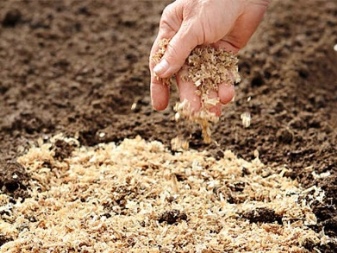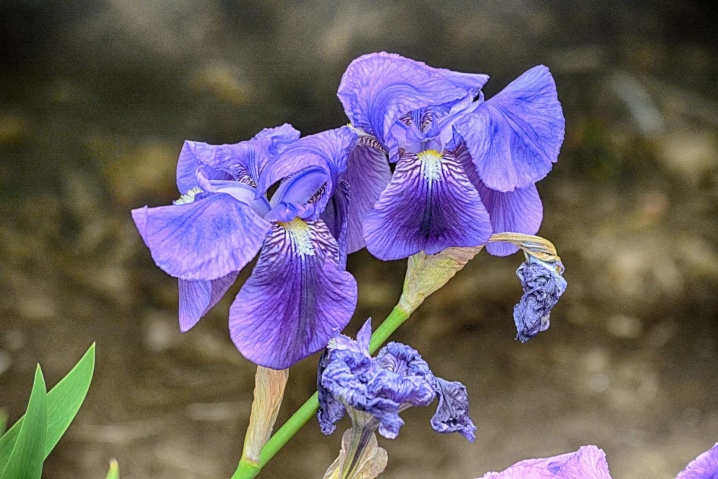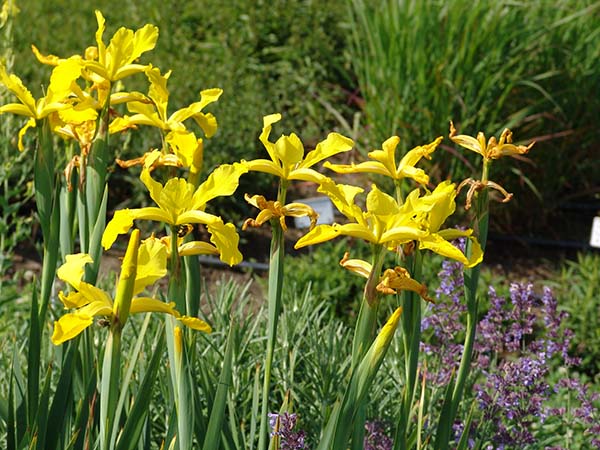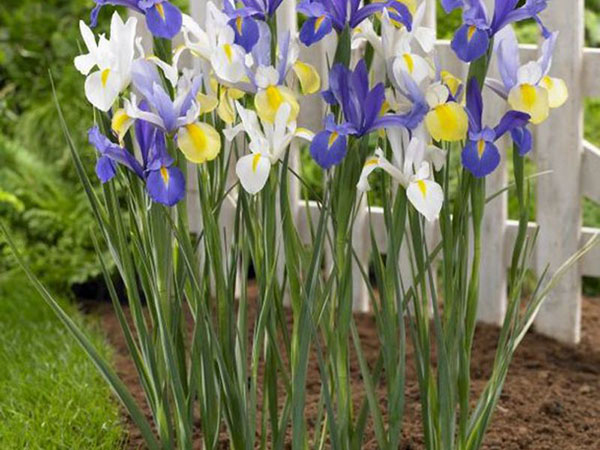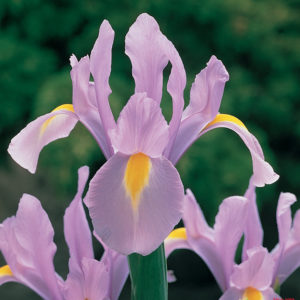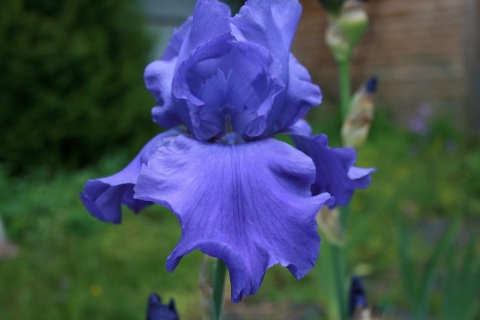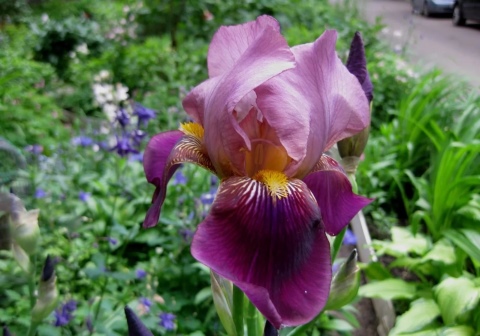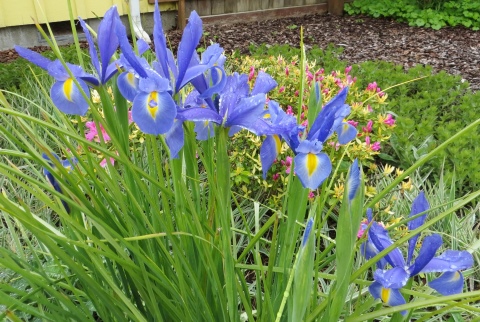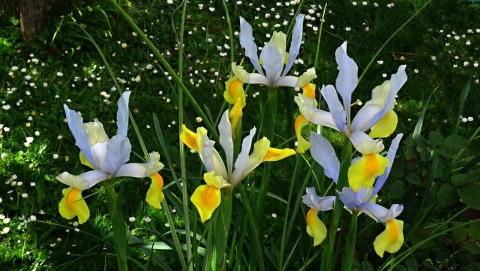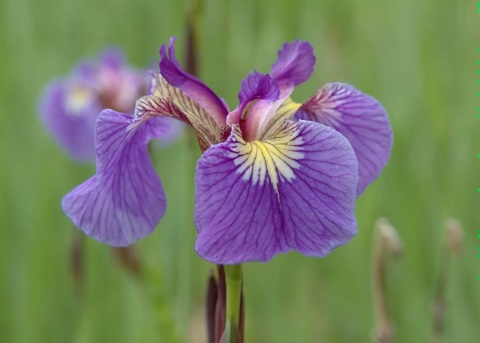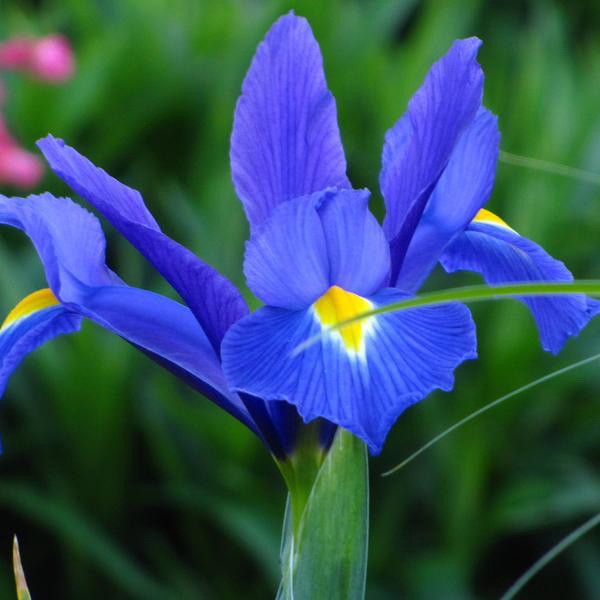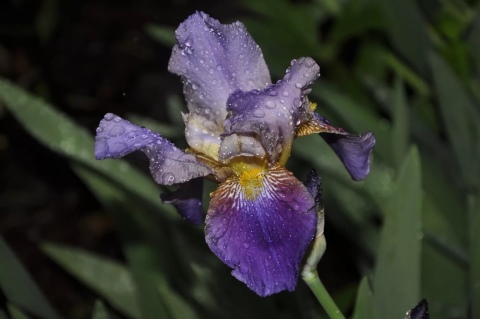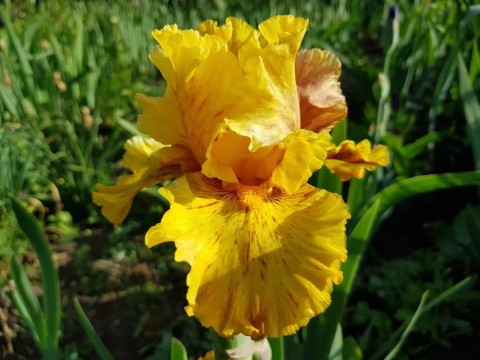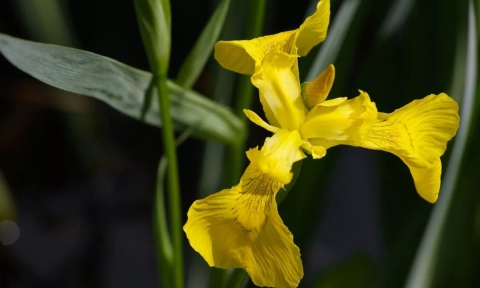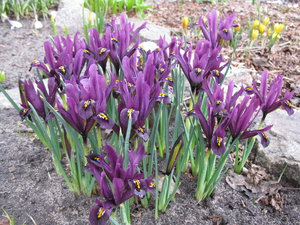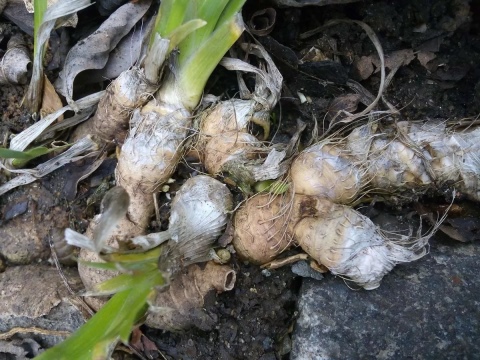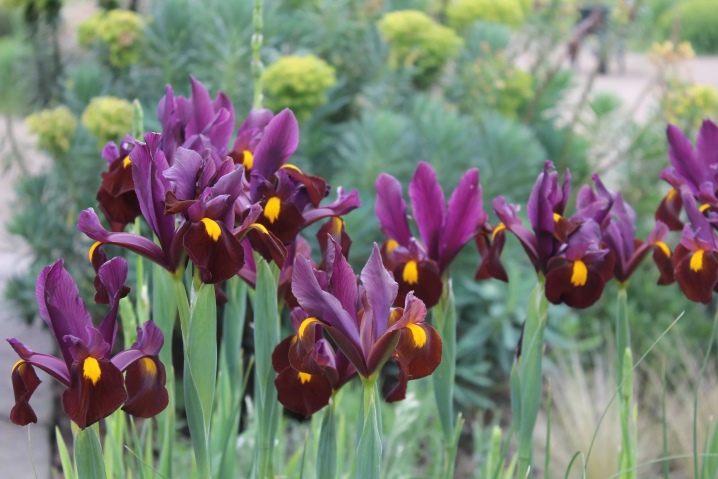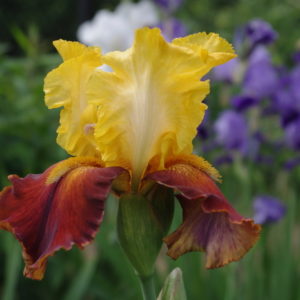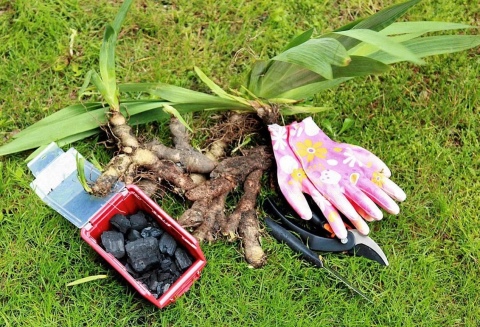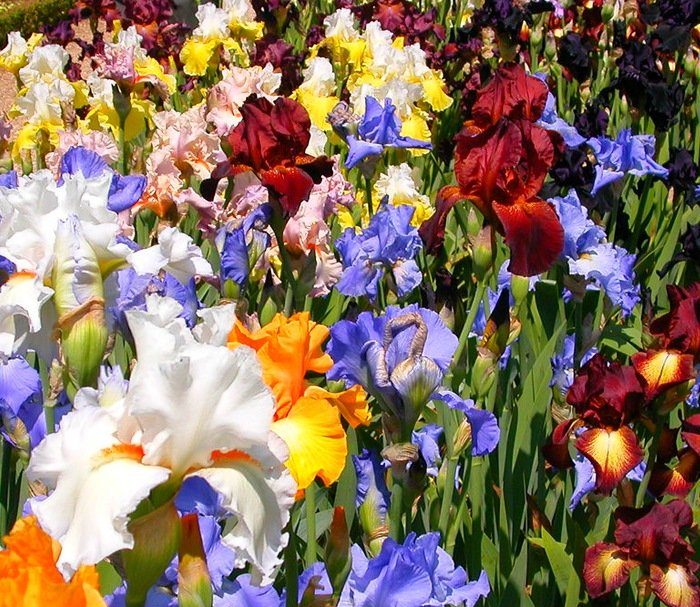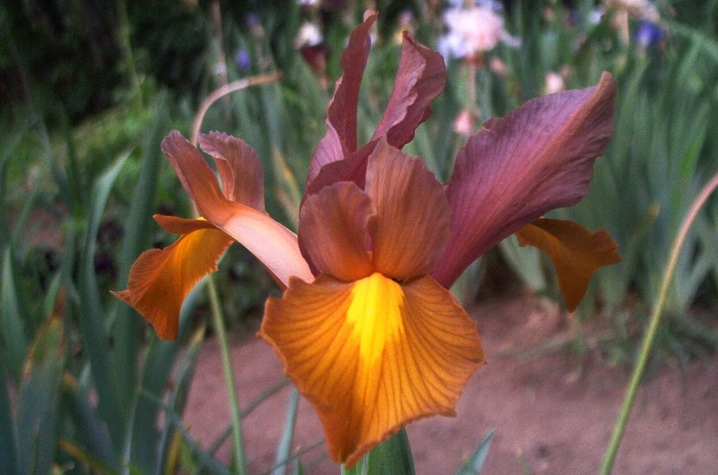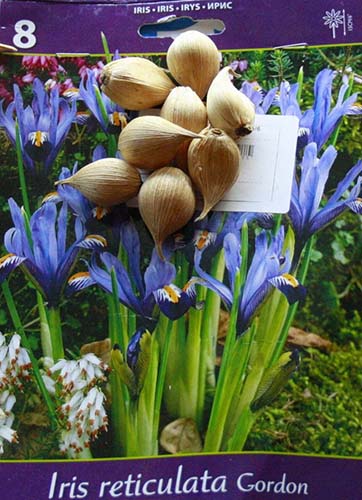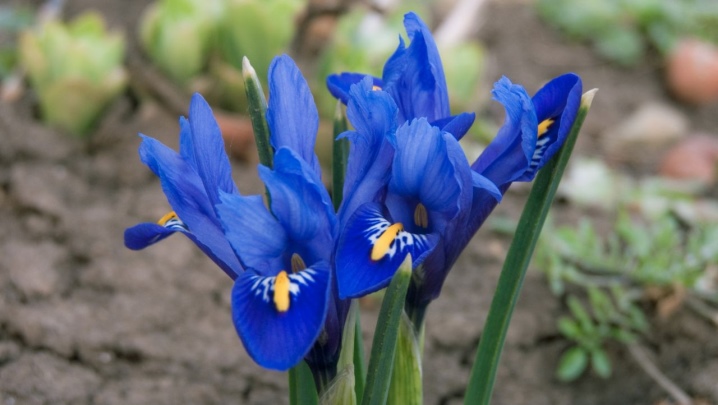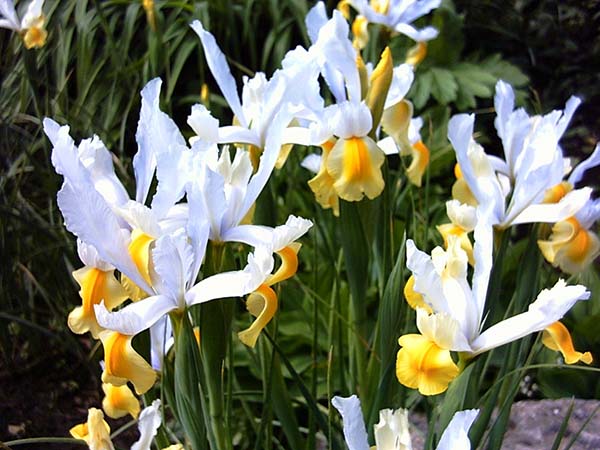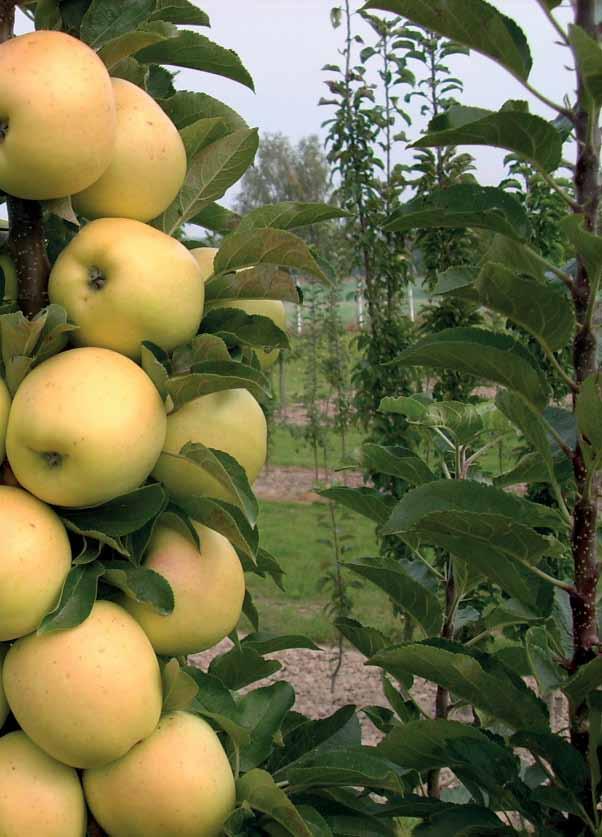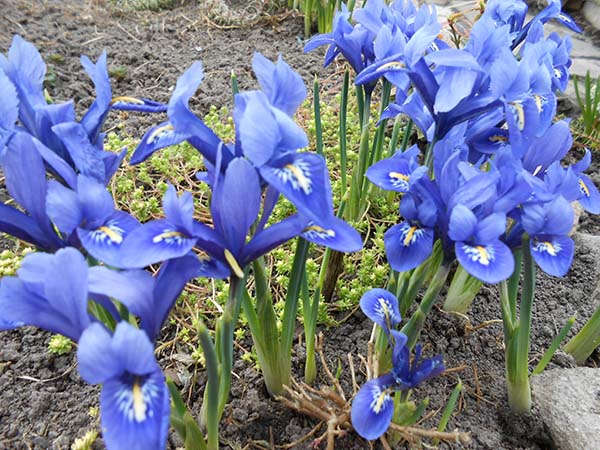How to plant?
Many novice growers believe that it is the spring planting that is considered the most preferable for Dutch irises. Actually this is not true. Of course, these flowers can be planted in spring, but in this case, you should not count on their exuberant flowering in the first year of planting.
In this case, the sequence of actions should be as follows.
Selecting the correct seed. It is best to purchase Dutch iris bulbs from specialized nurseries or trusted stores.
Soil preparation. These plants are extremely demanding on its composition, so it is necessary to take care of the correct fertilization and create the best soil in advance - it should be easily permeable and allow air to pass through well.
But it is important to remember that you cannot use chemical fertilizers - iris does not tolerate them.
The bulbs must be disinfected. They are placed for 5 hours in a warm solution of potassium permanganate, after which they are laid out on fabrics and left in a ventilated room until completely dry.
The soil in which the Dutch irises will be planted is also spilled with a warm solution of potassium permanganate.
Now it is necessary to make holes in the ground with a depth of about 20 cm and pour a sand cushion on their bottom, which should occupy a third of this depth.
Flower bulbs are installed in the sand, deepening them by a third of the height
The distance between the bulbs is about 12 cm.
It is necessary to thoroughly shed the planting with warm water, and mulch on top. It is best to use old leaves, small pebbles and sod.
If, nevertheless, it is decided to plant Dutch irises in the spring, then the sequence of actions will be the same. True, before planting, each bulb must be carefully inspected for damage or rot.

If the bulbs are planted not in open ground, but in closed, then instead of mulching, the planting material is sprinkled with a thin layer of soil and spilled again. And the bulbs themselves are planted so that their tip is visible on the surface. The best planting time is mid-January - early February.
Landing
When buying, you need to carefully examine the planting material. The golden bulb should be smooth and firm, free from lesions, spots or other defects.
Small windless, illuminated areas with a depth of groundwater of at least a meter are suitable for planting. Soils - light, slightly alkaline or neutral, as well as well-drained air and moisture permeable.
Sand and lime must be added to clay and acidic soils, which will extinguish the increased acidity. If the flowers are planted in areas with high humidity, then you need to make a drainage layer of expanded clay, small pebbles, etc. at the bottom of the planting hole.
- The bulbs are treated with a solution of a fungicide, for example, Fundazole, to protect against fungal mold, and then dry well.
- Before planting, the soil is dug up and well loosened, and also neutralized with an aqueous solution of potassium permanganate.
- Planting holes are made at a distance of 10-15 cm. The planting depth should be equal to double or triple the length of the bulb, usually up to 10 cm.
- The bulbs are covered with soil and watered abundantly.
Important! If the sprouted bulb is planted in the spring, then it is not necessary to deepen it, just a green arrow is left above the soil level. Dutch hybrids do not bloom for long.
Planted in autumn, bloom from late April to mid-June, and bloom a little later in spring, depending on the variety and region. Plants do not tolerate excess moisture. At home, after flowering, the bulbs remain in the ground, but thanks to the dry climate, they are well preserved.In Russia, in summer, there is often a rainy period with a lot of precipitation, therefore, after flowering, the bulbs must be dug out. So that the place is not empty, you can plant any annual crop
Dutch hybrids do not bloom for long. Planted in autumn, bloom from late April to mid-June, and bloom a little later in spring, depending on the variety and region. Plants do not tolerate excess moisture. At home, after flowering, the bulbs remain in the ground, but thanks to the dry climate, they are well preserved. In Russia, in summer, there is often a rainy period with a lot of precipitation, therefore, after flowering, the bulbs must be dug out. So that the place is not empty, you can plant any annual crop.
If irises are planted in late August or early September, before the onset of the first cold weather, then the bulbs are not watered, and the planting site is closed so that excess moisture does not accumulate in the soil. It is recommended to make a protective shelter for the winter. Almost any light-loving flowers can be planted next to the irises.
The complex of care measures includes watering, weeding from weeds, loosening, as well as feeding and preventing diseases of fungal origin and pests (butterfly caterpillars, thrips, slugs).
When watering, it should be borne in mind that plants are very sensitive to moisture, therefore, excessive waterlogging and, on the contrary, drying out of the soil should not be allowed. Watered at the root 2-3 times in 7-10 days. Flowers should be protected from direct sunlight and, if necessary, shaded. In addition, they do not tolerate heat well.
Some time after rains and irrigation, an earthen crust usually forms, which reduces the supply of oxygen to the soil and contributes to the stagnation and condensation of "air" moisture. Therefore, the culture needs periodic loosening 1-2 times a week. This is done 1-2 days after rainfall or watering, when the ground is still wet. Loosening promotes better oxygen penetration to the roots, which is beneficial for Dutch irises.
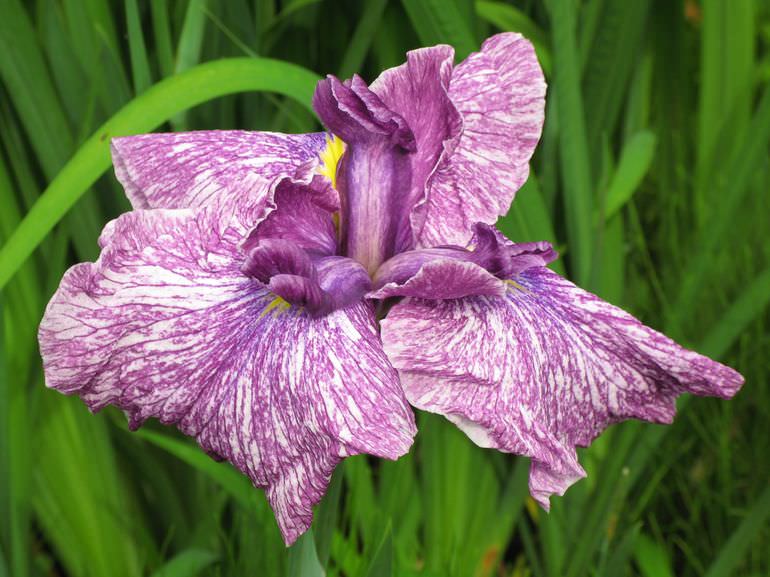
After complete rooting, organic fertilizers are used as top dressing - compost, rotted humus, wood ash. It is not recommended to introduce nitrogen-containing mineral fertilizers, especially during the budding period, as they will cause a rapid growth of the green mass.
If the variety is tall, and the site is exposed to gusts of wind, then you need to put supports so that the stems do not break.
After the last flowers wither, after 2-3 weeks, when the leaves are just beginning to dry, the bulbs are dug up. They are cleaned of earth and dried well in a warm (about 25 ° C), dry, ventilated place with an air humidity of no more than 50-60%. Bulbs are stored in boxes with aeration holes, which can be filled with sawdust or sand, in a cool (15-18 ° C), darkened room.
Iris storage

Dug out or acquired rhizomes of bearded irises in autumn can be saved until spring by placing them in a dry and cool place. Dry the rhizomes well and place them in a cardboard box that you need to close tightly. It should be placed on a loggia or balcony. At the same time, it is recommended to wrap each rhizome with a cloth or a sheet of paper, and you can also sprinkle them in a box with dry peat or the same sawdust.
Other irises prefer a humid habitat, therefore, in order to preserve them, it is necessary to plant them in a flowerpot. Before planting, you need to remove long roots, and the rhizome itself should be lowered and held in a not very strong solution of potassium manganese for disinfection. Then it must be dried. It is not necessary to deepen the rhizome; it is only sprinkled with soil a little. In springtime, the sprouted rhizome should be taken with a lump of earth and planted in open soil.
Varieties of noble iris
Due to its popularity, simple growing conditions, breeding and maintenance, German iris has many varieties of various types.There are a huge number of hybrid forms of this plant, but they all differ in their original appearance and exceptional ability to combine with any other crops.
We list the most common varieties.
Black Dragon (Black Dragon) - the most desirable variety of all growers. The distinctive and most attractive feature of this hybrid is its color scheme: Black Dragon has three shades - ink-charcoal, deep blue. All shades shimmer incredibly in the sun, contrasting with the rich green foliage.
Reaches 90 cm in height, corrugated flowers, large - up to 15 cm in diameter, have a pronounced aroma.

Black Dragon has an excellent coloration
Sultan's Palace is an extremely unusual plant, characterized by blood-red flowers with a curly yellow beard. Great for creating an eye-catching, vibrant flower bed.
Stem up to 60 cm high, flowers of medium size.
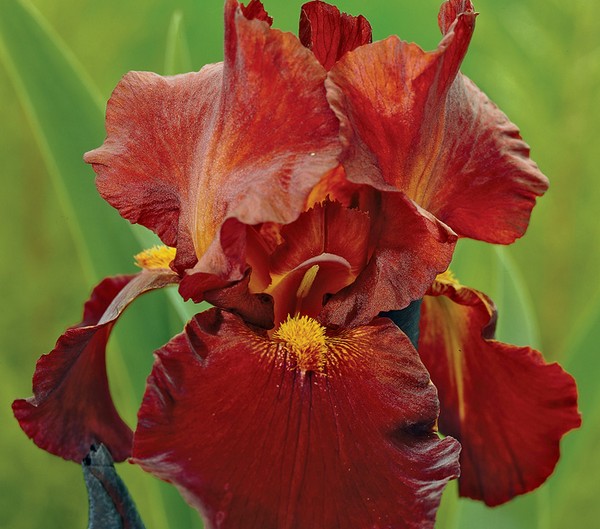
The Sultan Palace variety has bright red flowers
The Sea Double is a very hardy hybrid of iris that easily tolerates cold weather, survives well in the shade and is unpretentious to the place of residence. Deep blue flowers with a light blue beard. As the name suggests, iris evokes memories of the sea, bringing a touch of romance to the flower bed.
The Sia Double reaches a height of 100 cm, has large flowers up to 15 cm in diameter. Its aroma captivates, envelops in a melancholic mood.
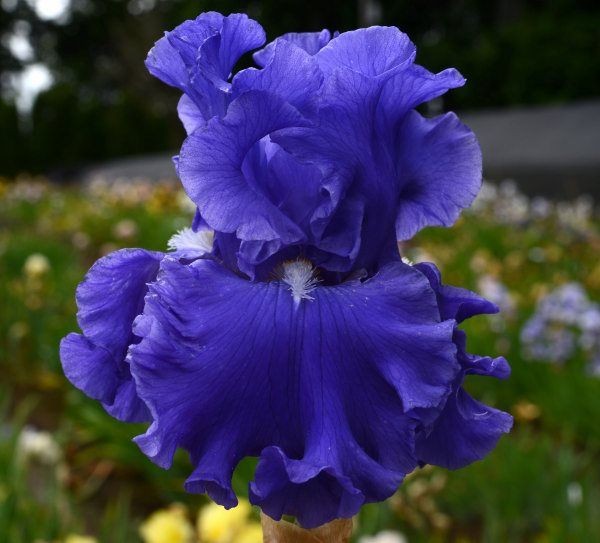
Sia Double has a rich blue petal color
Windsor Rose is a variety that vaguely resembles lilacs. The color scheme at first glance is surprising: the petals of lavender and scarlet flowers, and the beard of the iris is tangerine. Sets a cheerful mood for the entire flowerbed and surrounding area. The aroma is light, pleasant.
Height Windsor Rose from 80 to 100 cm, flowers from 12-16 cm in width.
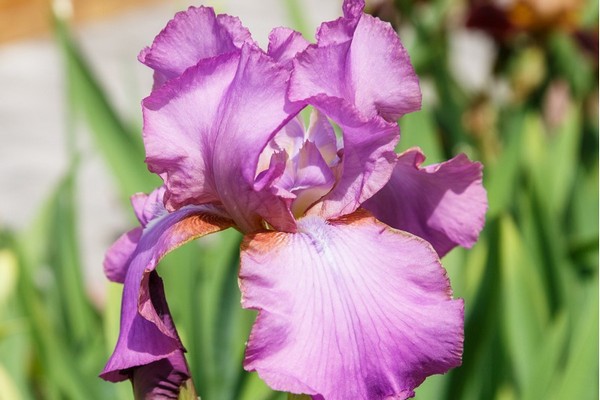
Windsor Rose Variety
Purple Striped White is a variety that looks like an orchid in appearance. A refined flower, with delicate tints of the bud, which are effectively complemented by white strokes. The flowers look velvety. Most often, this hybrid is used in the creation of male compositions and in colorful bouquets.
Stem height reaches 85 cm, flowers are small, up to 8 cm in diameter.

Purple Stripe White has a delicate purple color.
Orange Harvest is a hybrid with bright saturated orange flowers. A catchy, memorable flower. However, it is quite whimsical in the vicinity of other plants: it gets along without problems with other irises, but does not favor plants of other families next to itself.

German iris variety Orange Harvest
Apache Warrior is considered to be the most decorative variety. Flowers of a golden hue, shaded by red and brown tones. This hybrid is often referred to as a soda rainbow.
Another representative of tall irises, the height of which often reaches 150 cm. The flowers are large, of excellent shape, at the base of which a rosette of leaves is formed.
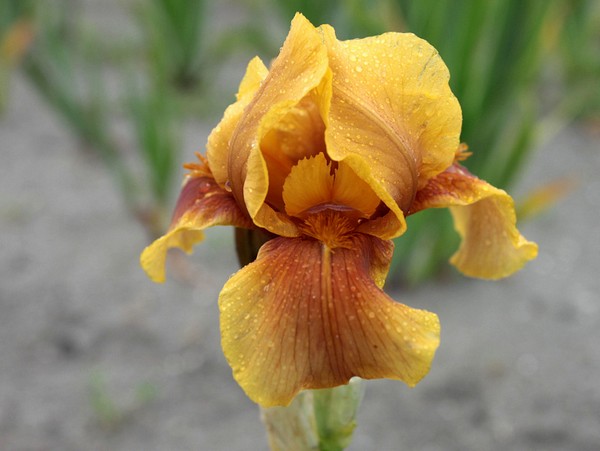
Iris Apache Warrior flowers have a golden color
These are not all hybrids of German iris, in fact, there are a huge number of them. The listed varieties are most popular due to their unusual appearance.
How tall bulbous irises xyphyums are used
Xyphiums are valued in landscape design, they are used for decorative purposes for decorating flower beds, composing bright compositions in personal plots.
With their help, you can very effectively design a border, create a luxurious monochromatic or variegated flower bed, planting several copies of the same or different varieties at the same time. These flowers look good in open areas, as well as in the spaces between tall ornamental garden plants with large buds, such as roses.
This crop is grown mainly in small groups, scattered in different parts of the garden.
The planting of Dutch iris xyphyum on rocky hills, against the background of evergreen conifers, for example, juniper, spruce, cypress, thuja, fir, is beneficial.
Many gardeners grow xyphyums in large pots, thus decorating balconies, terraces, and recreation areas in the country. Since the culture is thermophilic, it is a great solution for regions with extreme temperature fluctuations and cool nights.
Dutch irises, as noted above, can be grown year-round for distillation. Since ancient times, bouquets of fresh cut xyphyums have been valued and considered one of the most beautiful and luxurious.
How to take care of it properly?
Siberian iris belongs to unpretentious plants that require a minimum amount of care and attention, but despite this, before planting, you must carefully study all the features of the implementation of this process. Caring for a killer whale consists in timely watering, feeding and pruning. Iris belongs to moisture-loving plants, which are best planted near water bodies. During a drought period, the flower should be watered regularly and abundantly. The soil near the flower should always remain moderately moist. Due to the developed root system, in which moisture accumulates, adult plants need less watering intensity.
The pruning process consists in the timely removal of inflorescences with seed pods after flowering. If the seed is not removed, then it will simply fall to the ground, and in the spring it will germinate with weak shoots. At the end of autumn, it is imperative to cut off the entire aerial part. If you do not carry out these works, then in the spring, young shoots will not be able to break through the dense leafy layer.


In order for the plant to have a beautiful appearance and please with abundant flowering, starting from the second year it must be regularly fed with mineral and organic fertilizers. In early spring, it is necessary to enrich the soil with special mineral complexes, and in case of wet weather, foliar dressing must be performed. After bud formation, professional gardeners recommend reintroducing mineral nutrients and organic matter.
To create the most comfortable conditions for the development of the root system, the entire area with flowers must be mulched with chopped tree bark, coniferous needles and sawdust. Despite their unpretentiousness, irises do not tolerate transplanting to a new place very badly, therefore, this flower should be disturbed no more than once every 4 years.

